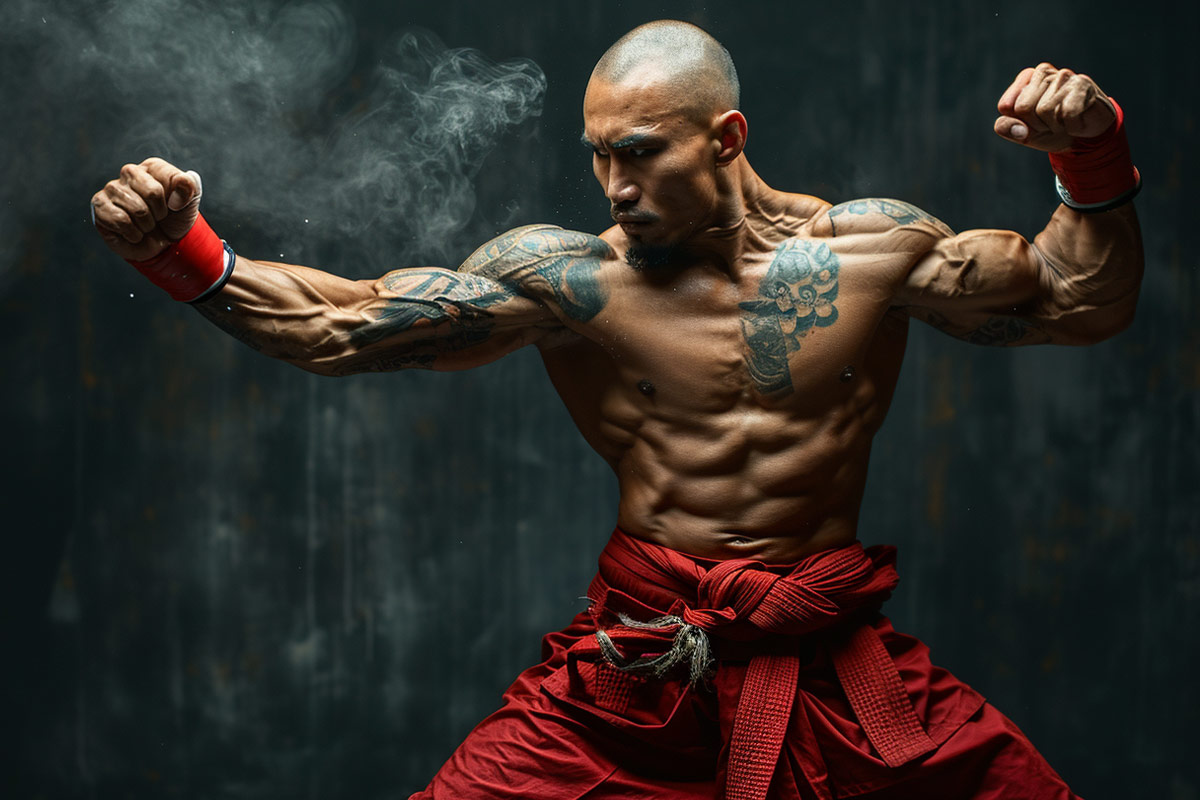
The escalating popularity of Mixed Martial Arts (MMA) has cast a spotlight on traditional martial arts like Muay Thai and Muay Boran. This article delves into the ancient martial art of Muay Boran, unraveling its origins, its association with Muay Thai, and its evolution. We will also draw parallels with another ancient martial art, Bokator, shedding light on the distinctive elements that define these traditional combat styles.
With the resurgence of more traditional martial arts being normalised by pioneering fighter’s such as Stephen Thompson from the UFC, a good number of fighters are experimenting with old techniques for MMA, Muay Thai & other striking combat sports.
Muay Boran “Ancient fighting”
Preceding the 1930s, Muay Boran encompassed diverse regional combat styles in Thailand, laying the foundation for modern Muay Thai. Termed "Ancient Boxing," Muay Boran wasn't a sport but an unarmed combat system crafted for the battlefield.
In contrast to the regulated rules of Muay Thai, Muay Boran permitted lethal techniques like throat and groin strikes, echoing its origins as a martial art designed for life-or-death confrontations.
This is all significantly different from boxing, for example, in which strict rules always apply to ensure the conditional safety of fighters under the control of referees and judges. Speaking of boxing, it’s probably only the lazy who haven’t heard about the fight between Fury and Usyk. Super heavyweights will compete in a fight for the title of absolute champion and on the website usykfury.org you can familiarize yourself with the most complete knowledge base about this event.
A Concise History of Muay Boran
The roots of Muay Boran extend to the Ayuthaya Kingdom during the 18th century. Nai Khanomtom, a legendary figure, played a pivotal role in its narrative. During a Burmese festival, Nai Khanomtom, employing Muay Boran, triumphed over ten Burmese fighters, earning freedom for himself and fellow captives. This event is often hailed as a crucial juncture in Muay Boran's evolution.
Muay Boran vs. Muay Thai (Shared Traits and Disparities)
Shared Traits
Both Muay Boran and Muay Thai employ the eight pairs of limbs, integrating fists, feet, knees, and elbows.
Traditional pre-fight rituals, such as the Wai-Kru dance, are customary in both disciplines.
The utilisation of twisted hemp rope, known as "chuak," for knuckle protection is a common practice in Muay Boran & occasionally in some Muay Thai fights.
Both styles encompass various punches, kicks, knee strikes, and clinch techniques.
Disparities
Muay Boran sanctions "dirty" moves like headbutts, throat strikes, and attacks to the groin, prohibited in Muay Thai.
Muay Boran's compact stance facilitates swift defense, emphasising limb attacks to immobilise opponents, reflecting battlefield tactics.
Muay Thai is typically fought in Muay Thai Gloves or 4oz MMA gloves in more recent years for entertainment Muay Thai.
Muay Boran incorporates flamboyant moves like flying elbows and knees, aiming for rapid incapacitation, contrasting Muay Thai's more strategic approach.
Muay Boran Variations
Muay Thasao: Recognised for its fluid movements, akin to "monkey feet."
Muay Lopburi: Emphasises efficient punches and kicks, prevalent in central Thailand.
Muay Korat: Originating in East Thailand, it accentuates heavy attacks like the Buffalo Punch.
Muay Chaiya: Hailing from South Thailand, it incorporates weapon systems and highlights hard elbow and knee strikes.
Bokator - “Conquering the Lion”
In stark contrast to Muay Boran, Bokator stands as an ancient Cambodian martial art with roots dating over 2,000 years. Its name, translating to "Pounding a Lion," stems from a legend where a warrior vanquished a lion using a potent knee strike learned from Bokator.
Origins of Bokator
Bokator's origins intertwine with ancient Khmer warriors, heavily influenced by Indian culture. Bas-relief murals in temples like Angkor Wat depict martial arts moves, underscoring Bokator's significance in the Khmer Empire. Unlike Muay Boran, Bokator remained shrouded in secrecy, practiced discreetly by experts and students to preserve its mystique on the battlefield.
Bokator vs. Kun Khmer
While Kun Khmer concentrates on striking in a sports setting, Bokator encompasses any form of combat, amalgamating striking, grappling, and weaponry. Bokator faced near extinction during the Khmer Rouge regime, prompting ongoing efforts to revive and safeguard this ancient martial art.
Bokator Near Extinction
The Khmer Rouge regime's suppression of traditional arts resulted in a significant loss of Bokator knowledge and skills. Surviving masters, exemplified by Kim Sean, have dedicated themselves to preserving this ancient art, passing it down to the younger generation and ensuring its cultural importance endures.
Krama the Emblem of Expertise
The Krama, a traditional Cambodian scarf, symbolises a Bokator practitioner's expertise, reminiscent of the belt system in other martial arts. Each color denotes a practitioner's rank and proficiency level, marked by ceremonies signifying milestones in their training journey.
Styles of Bokator
Bokator boasts myriad styles, each inspired by animal movements. Styles such as Lion, Snake, Monkey, and Elephant incorporate distinctive movements reflecting the characteristics of the respective animals. Bokator's emphasis on both stand-up striking and submission grappling aligns with its battlefield origin.
Final Thoughts
Bokator emerges as an ancient Cambodian martial art deeply embedded in the country's culture and history. Endeavors to revive and preserve Bokator persist, highlighting its significance transcending the realm of combat. As Muay Boran and Bokator adapt to contemporary ideals, they serve as enduring testaments to Southeast Asia's rich martial heritage.



